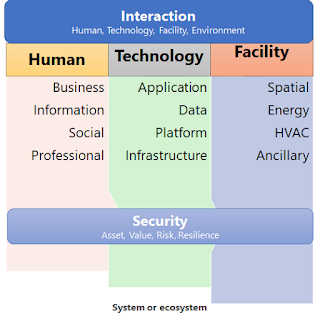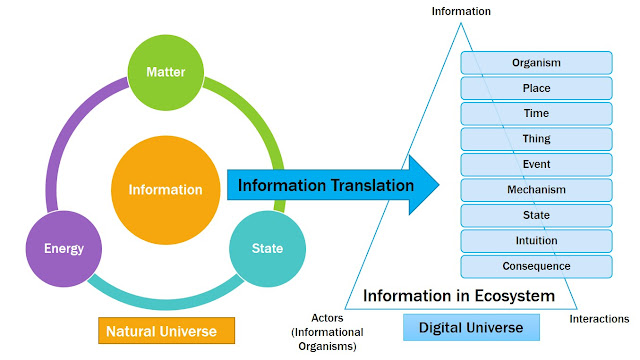Adaptive Enterprise Architecture for Digital Innovation and Transformation
Enterprise Architecture (EA) could be considered a descriptive and/or prescriptive design of an enterprise. Traditional approaches to EA heavily focus on the modelling and documentation aspects and tend to overlook the actual stakeholders and their needs, in particular, when dealing with complex and large digital innovation and transformation.
This calls for the need of an adaptive EA. Based on ISO/IEC/IEEE 42010:2011, an adaptive EA is the fundamental concepts or properties of an adaptive enterprise service system or ecosystem:
Adaptive EA requires a fundamental shift the way currently organisations operate their EA capability for digital innovation and transformation. Adaptive EA design can be sliced and diced, and iteratively evolve for a particular context and situation to address the stakeholder needs. This requires avoiding boiling the ocean of enterprise modelling for developing the strategy, architecture and roadmaps for digital innovation and transformation. Instead of doing a big-upfront detailed architecture design or modelling, slicing of an adaptive architecture can be done from the following perspectives for a value within the given time period or timebox (week, month, quarter, year):
Balancing depth vs breadth within a value timebox.
Breadth (architecture layers or domains)
Depth (level of details)
This calls for the need of an adaptive EA. Based on ISO/IEC/IEEE 42010:2011, an adaptive EA is the fundamental concepts or properties of an adaptive enterprise service system or ecosystem:
- situated in its environment (e.g. political, economic, sociological, technological, legal and environmental),
- embodied in its elements (e.g. interaction, human, technology, facility),
- relationships (e.g. type and strength) to each other and its environment, and
- in the adaptive principles of its secure design and evolution.
The Gill Framework ® V4.0
Adaptive EA requires a fundamental shift the way currently organisations operate their EA capability for digital innovation and transformation. Adaptive EA design can be sliced and diced, and iteratively evolve for a particular context and situation to address the stakeholder needs. This requires avoiding boiling the ocean of enterprise modelling for developing the strategy, architecture and roadmaps for digital innovation and transformation. Instead of doing a big-upfront detailed architecture design or modelling, slicing of an adaptive architecture can be done from the following perspectives for a value within the given time period or timebox (week, month, quarter, year):
Balancing depth vs breadth within a value timebox.
Breadth (architecture layers or domains)
- Interaction
- Human
- Technology
- Facility
- Security
Depth (level of details)
- Ecosystem architecture
- Enterprise architecture
- Segment architecture
- Capability architecture
- Process architecture
- Product architecture
- Service architecture
- Solution architecture
This post only introduces to the concepts of Adaptive EA. In my next post I will discuss the adaptive EA design and practice concepts. Finally, I will discuss an application scenario of adaptive EA based on the real industrial case.
References:
Gill, A.Q., 2014. Applying agility and living service systems thinking to enterprise architecture. International Journal of Intelligent Information Technologies (IJIIT), 10(1), pp.1-15.
Gill, A.Q, 2015. Adaptive cloud enterprise architecture. World Scientific.
Gill, A.Q, Bunker, D. and Seltsikas, P., 2015. Moving Forward: Emerging Themes in Financial Services Technologies' Adoption. CAIS, 36, p.12.
Korhonen, J.J., Lapalme, J., McDavid, D. and Gill, A.Q., 2016, August. Adaptive enterprise architecture for the future: Towards a reconceptualization of EA. In 2016 IEEE 18th Conference on Business Informatics (CBI) (Vol. 1, pp. 272-281). IEEE.





IT's very informative blog and useful article thank you for sharing with us , keep posting learn more about Product engineering services | Product engineering solutions.
ReplyDeleteInteresting
ReplyDelete